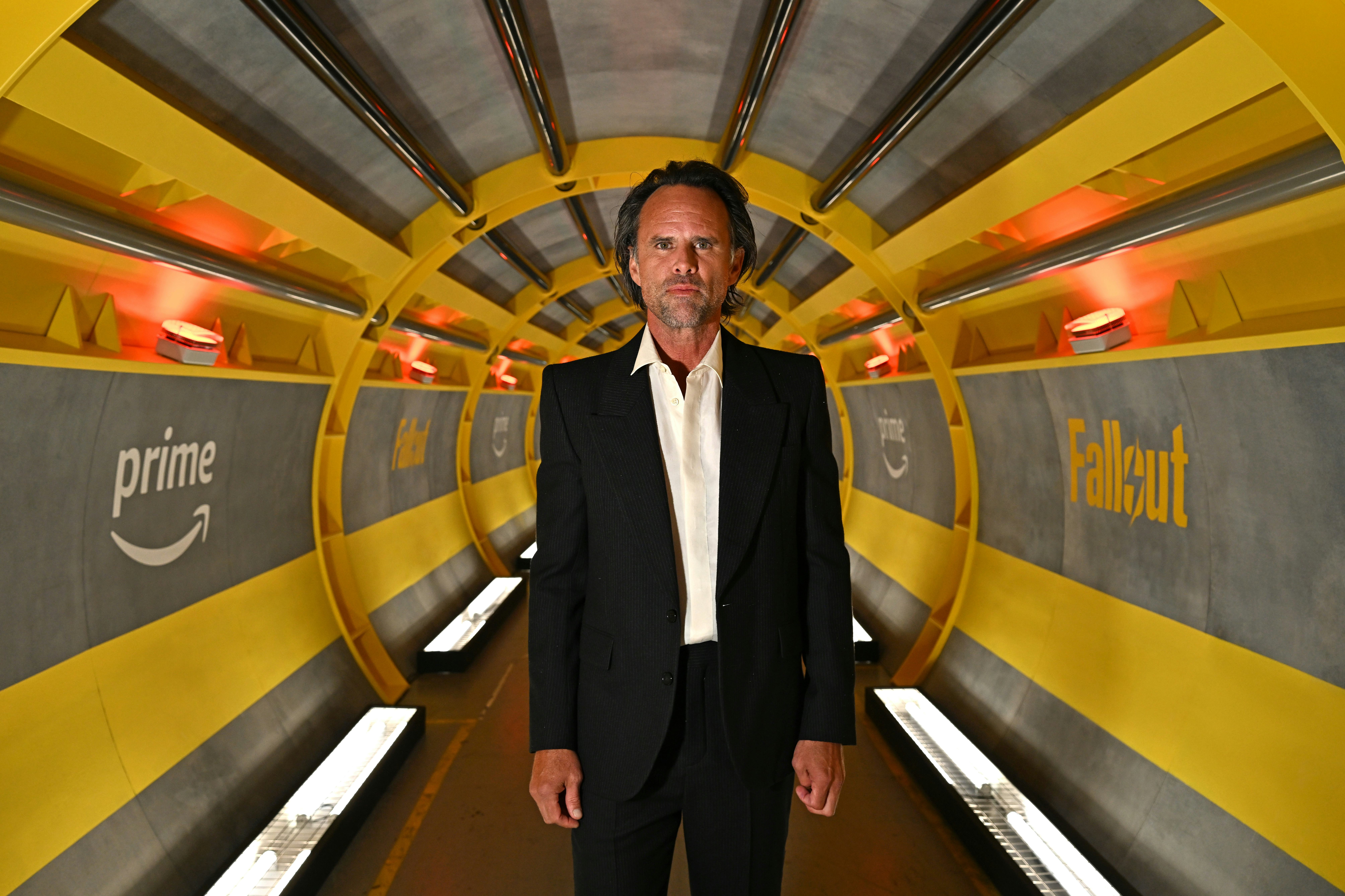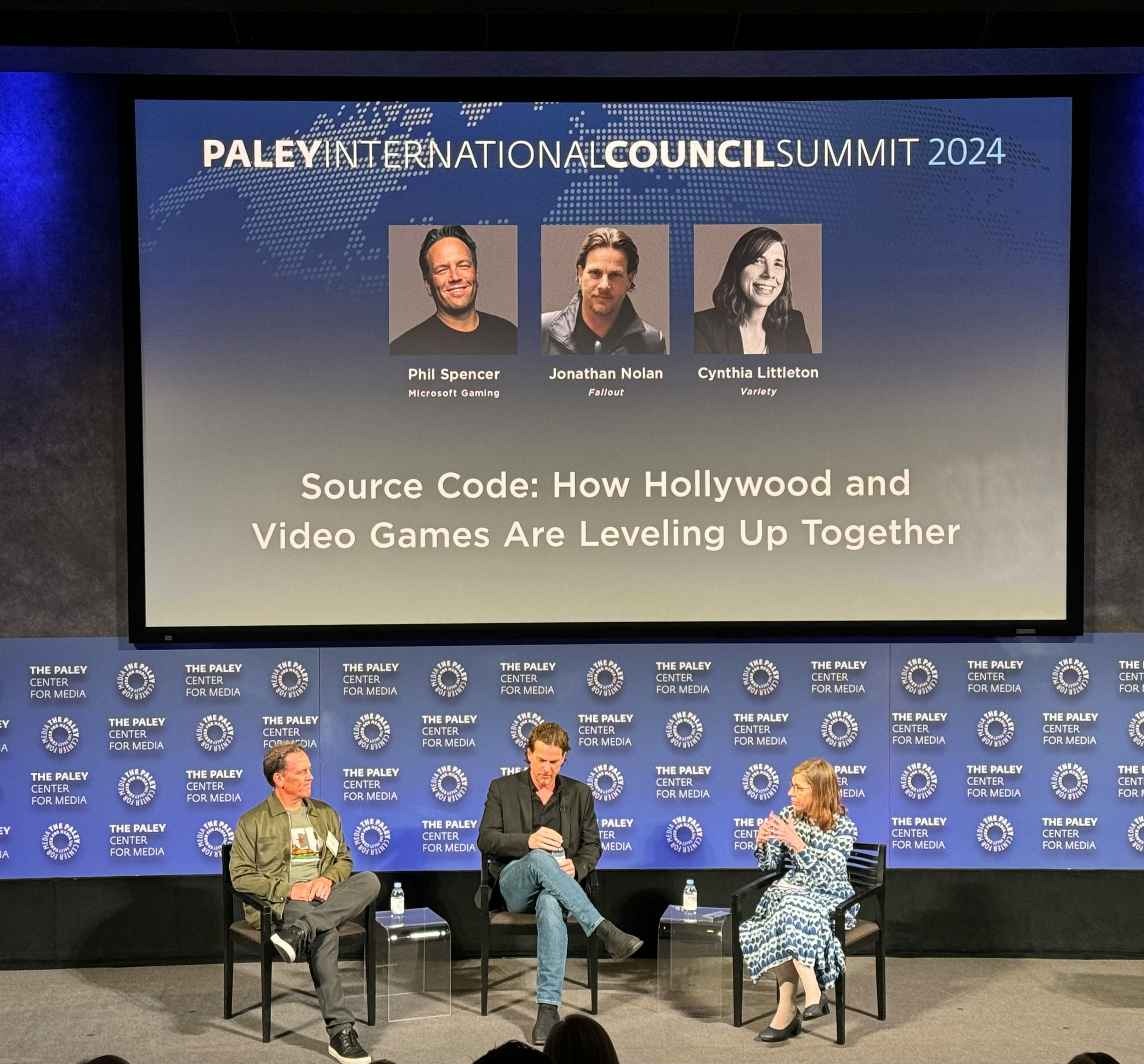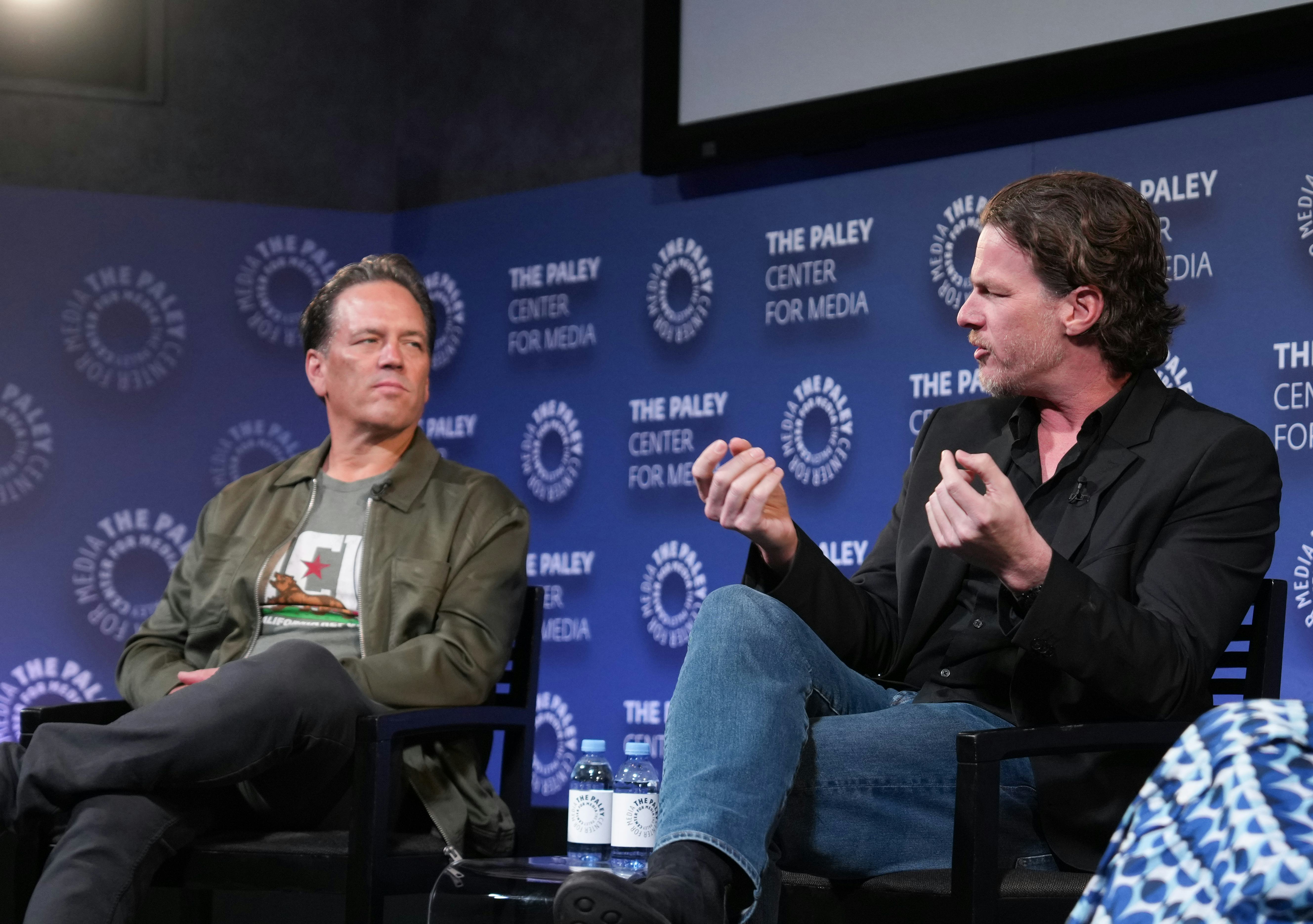
Fallout has such a wealth of lore that it is downright impossible to fully explore it all on the small screen. But some questions are more pressing than others. For example, we all want — need! — to know more about how Walter Goggins’ character, The Ghoul, got the way he is. Once a heroic family man, now hardened outlaw, the Ghoul is a menace you can’t help but root for. Turns out, we may be in luck.
During New York’s annual Paley International Summit, executive producer Jonathan Nolan gave fans of the series a good tease. Nolan is a hardcore fan of the Fallout series, who chose not to tell us exactly how much he’s played (“I won’t share how many Fallout hours I’ve played, but it’s a lot”). But one thing he’s noticed where the medium of video games struggles is with telling backstories through flashbacks — and that’s something he’d like to remedy in television.
When we specifically ask him about whether we’ll get to see the Ghoul’s full backstory and the direct aftermath of the bombing, Nolan responds: “For the most part, in games, it’s a little harder grammatically to flashback, right? Some games can do it very well. There are a couple of memorable flashbacks in Call of Duty and other franchises. But for the most part, you kind of lock the user into that first-person point of view across both space and time.”

Nolan is referring to how role-playing games like Fallout often give players a character creation screen and spend the duration of their runtime from the perspective of those created characters. While there are tons of creative ways that video games have tackled the challenge of depicting flashbacks, such as cinematic scenes in Yakuza, Nolan’s statement is true for developer Bethesda’s particular flavor of RPGs, which shies away from cut-scenes, preferring to ground the player in interactions to maximize playtime. Non-playable characters in Bethesda’s Starfield will talk your ear off at length, all without submerging you in a sequence you can’t exit.
Season 2 has begun filming in Los Angeles, sunny California, a big contrast from the first season, which was made in New York. Nolan says he’s excited to explore the slightly different version of America and how the world comes to an end in flashbacks.
“In a show, you can flashback and you can explore that world beforehand,” Nolan says. “It’s one of the things I love the most about Season 1 and we will be doing more of that in Season 2.”
The Long Game

The unlikely partnership between Nolan and Bethesda’s game director Todd Howard began after Nolan persistently asked to meet and Howard finally agreed to a lunch.
As Howard told it to me last year, “We started talking and his vision matched up with my vision... it was like I had known him my whole life. It was like, he’s making the show, I don’t care what we have to do.” As Nolan says, “We hit it off.”
Microsoft Gaming CEO Phil Spencer allowed that Howard was the one in charge of checking on whether the show did the games justice, but he did address fans’ complaints that there was no new Fallout game to accompany the show’s premiere.
“We didn't have a new game lined up for the launch,” Spencer admits. “I actually think that gave us some creative liberty that wouldn't have had if we tried to coordinate production of two very different creative processes to land at the same time.”
He points to Fallout 76 and the mobile game Fallout Shelter as examples of live service games that fans were able to jump on while watching the show.
“The play is much more long term than trying to drive some gift buying,” Spencer says.







